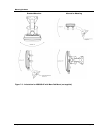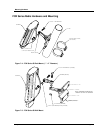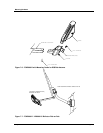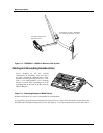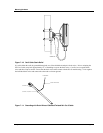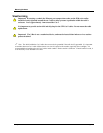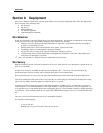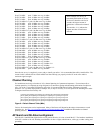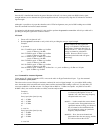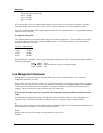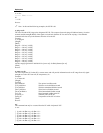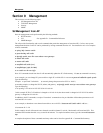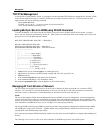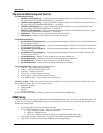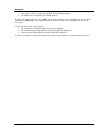
Deployment
Trango Broadband Wireless — Access5830 User Manual Rev. F page 37
Once the SU is installed and aimed in the general direction of the AP, it is time to perform an RSSI (relative signal
strength indicator) test to determine the signal strength from the AP, and to precisely align the SU antenna for maximum
signal strength.
Although it is possible to rely upon the subscriber unit’s LEDs for alignment, more precise RSSI readings are available
from the command line interface ssrssi command.
In conjunction with the ssrssi command, it is also useful to perform the apsearch command that will tell you which AP is
providing an adequate signal at the location of the SU.
AP Search
1. Ensure AP is in Opmode “AP.”
2. Run the apsearch command to verify which AP is providing the strongest signal strength.
Example:
#> apsearch
Ch 1 5736 MHz h peak -96 dBm avg -99 dBm
v peak -97 dBm avg -99 dBm
Ch 2 5756 MHz h peak -97 dBm avg -99 dBm
v peak -97 dBm avg -99 dBm
Ch 3 5776 MHz h peak -97 dBm avg -99 dBm
v peak -97 dBm avg -99 dBm
Ch 4 5796 MHz h peak -97 dBm avg -99 dBm
v peak -97 dBm avg -99 dBm
Ch 5 5816 MHz h peak -97 dBm avg -99 dBm
v peak -97 dBm avg -99 dBm
Ch 6 5836 MHz h peak -44 dBm avg -45 dBm B11 A 1 peak -44 dBm avg -45 dBm rx 1545 pkts
v peak -58 dBm avg -99 dBm
#>
ssrssi Command for Antenna Alignment
Telnet into the SU (while in Opmode “OFF”) or access the radio via HyperTerminal/serial port. Type the command
ssrssi <channel> <polarization>.
The telnet session screen will begin a continuous readout of the received signal strength. As you read the RSSI reading,
move the antenna in the horizontal and vertical planes until the maximum RSSI reading is achieved. For short links you
can expect an RSSI of –60 dBm or better. For longer links an RSSI of –75 dBm is acceptable. Any RSSI of less than –
80 dBm is likely too weak for the radios to reliably associate and pass data.
Examples:
#> ssrssi 2 v
Press [space] then [enter] to stop
AP ? -97 dBm
AP ? -97 dBm
AP ? -97 dBm
#>
#> ssrssi 6 v
Press [space] then [enter] to stop
AP ? -58 dBm
AP ? -58 dBm
AP ? -58 dBm
#>
#> ssrssi 6 h
ssrssi 2 v — In this example very little energy
was detected, although the AP was in
Opmode "AP," since the wrong frequency
and polarization were used.
ssrssi 6 v — In this example the correct channel
was used, but the wrong polarization, so a
significant amount of energy was detected,
the AP cannot be discerned because the
SU is looking for energy on a particular
frequency and polarization.
ssrssi 6 h — Here, the correct channel and
polarization show the most energy, and the
SU is able to discern the AP ID.
In this example, the only significant
energy is on channel 6 with horizontal
p
olarization. Further, the Base ID is 11,
and the AP ID is 1. There is significant
energy on channel 6, polarization
vertical. However, this SU is set to
horizontal polarization and will ignore
that energy.



